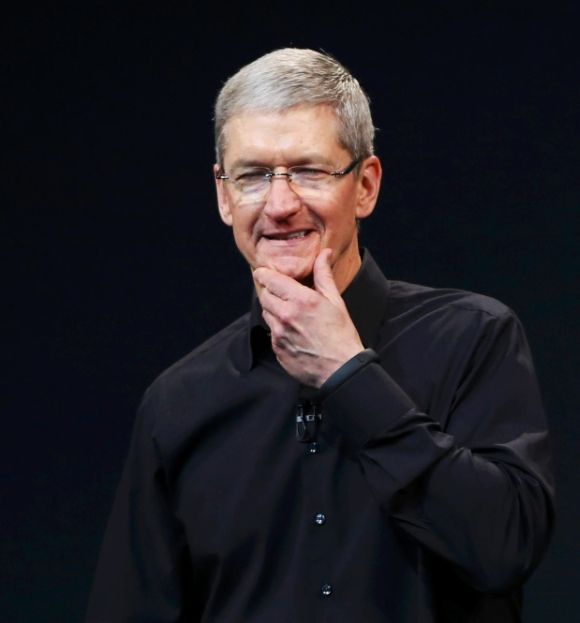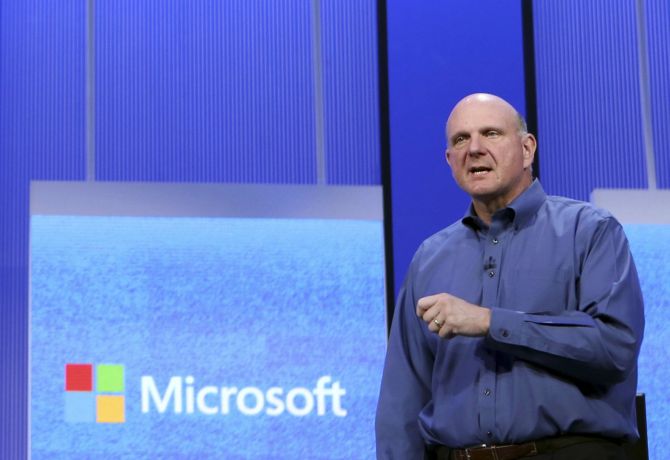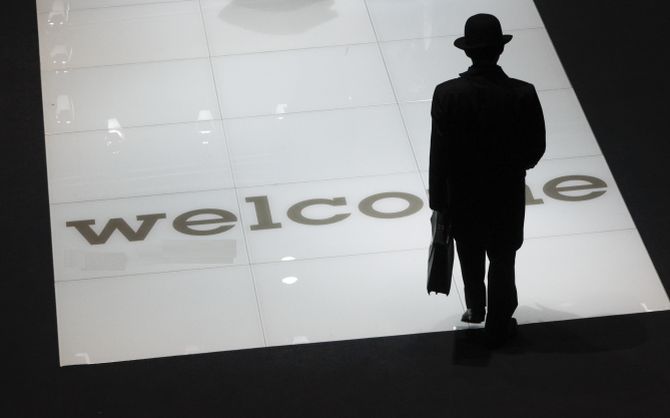 | « Back to article | Print this article |
Why investors are unhappy with leadership at Apple, Microsoft
Stakeholders are getting impatient with CEOs who are steady and stable. They want the leaders to take fast decisions and deliver quickly.
The Wall Street Journal on Monday published a detailed report on the story behind Steve Ballmer’s exit from Microsoft.
Just one paragraph summed it up: While Ballmer was trying to spell out his plan to remake Microsoft, John Thompson, a lead director, cut him off to say he was moving too slowly - “Hey dude, let’s get on with it. We’re in suspended animation”.
The report also quoted some Microsoft board members as saying they didn’t push Ballmer to step down but they were pushing him damn hard to go faster on change.
Ballmer’s counterpart in Apple, Tim Cook, had also faced some uneasy moments in August this year, when Apple’s board went public with its concern that while Cook was smart and thoughtful, he was perhaps too deliberate.
The board was reacting to the lack of visible innovation by the company when Cook announced in August that Apple had no new products to offer.
The operative word here is speed - Microsoft and Apple, like hundreds of thousands of other companies across the globe, were getting impatient with the pace of decision-making of their otherwise brilliant and accomplished CEOs since their boards focused the corporate culture on velocity, and how much can get done in as little time as possible.
Click NEXT to read more…
Why investors are unhappy with leadership at Apple, Microsoft
The young CEO of a large Indian company says, he would like his company’s brand motif to be “10 times” to remind his people they can do things 10 times better - and more importantly - 10 times faster.
He is in good company. A host of his counterparts in other organisations also feel that the need for speed is more critical than ever before.
The theory has powerful backers. Research released by McKinsey last month suggests that delay would be a mistake.
Authors Stephen Hall and Conor Kehoe looked at 365 CEOs who took office between 1990 and 2010, and concluded that CEOs who consciously exploited their honeymoon periods to reallocate corporate resources, generated materially stronger returns for shareholders than those who waited.
In the process, these active CEOs also seem to have prolonged their time at the top. What’s more, a similar decisiveness in changing the composition of the top team also brought disproportionate longer-term rewards, the study said.
Late starters - those who were slow to reallocate capital during the first three years of their mandate but then picked up the pace of change - found themselves out of favour soon enough.
For example, McKinsey discovered that just over one-third of the “relatively inactive” CEOs had moved on by year six, but only a quarter of the fast leaders had.
Click NEXT to read more…
Why investors are unhappy with leadership at Apple, Microsoft
“The message of our research is that over time, markets will be less forgiving toward CEOs who adopt a prolonged ‘steady as she goes’ policy”, McKinsey said.
Human resources consultants say the key for leaders, it seems, is to get ahead of the game and ahead of time: the best companies usually have several rounds of product launches stored up and ready ahead of time. And you can do this only when you are on the front foot.
Another WSJ report said, determining whether and when to replace lieutenants is a key decision for new managers. Timing is critical. If you move too slow, they may delay much-needed changes.
However, like all management wisdom, there is a counterpoint as well. And that is, if they move too fast, leaders also run the risk of dumping valuable institutional memory a bit too soon.
A consultant says organisations such as McKinsey often exaggerate some of the advantages of moving quickly since the need for speed often comes at a price of compressed decision-making windows and non-recoverability for critical errors.
There are other downsides as well. As business processes are cut and pasted to reduce steps, and decisions are made faster and faster, it’s much easier to make mistakes. And when mistakes are made, there is little to no time to correct them.
Click NEXT to read more…
Why investors are unhappy with leadership at Apple, Microsoft
The consultant says it’s not the boards or CEOs alone who are getting impatient with the pace of life around them, and that speed is becoming an obsession for all of us. Consider these examples; chances are at least one of them will sound quite familiar to you.
Scenario one: You have pressed the elevator button for the floor you want to reach. How many times have you muttered “come on!” if the elevator door takes even a second longer to close?
Scenario two: You are doing a Google search on something you want urgently. How many times have you clicked on the same link if it takes even slightly longer than you anticipated?
Scenario three: Your car is at a busy intersection. How many times have you tried to push your car an inch ahead in a bid to be the first to move when the green signal comes on?
Scenario four: (this is quite common among the leader-types) How many times have you asked yourself, Why can’t we do things faster? Why can’t it happen more efficiently? Why is this requiring three meetings instead of one?
The consensus seems to be that speed is essential but handle it with care. Otherwise, remember the ads put out by the traffic police: Speed thrills, but kills.




